Blue-tongued skinks are named after their very bright, curiously blue tongues. Yes, they really have blue tongues!
Scientists believe they may use their tongue to reflect UV rays to confuse predators from above, or to trick other animals into believing they may be poisonous (for the record: they are not).
This type of lizard is common in Australasia, particularly the deserts of Australia, Tasmania and New Guinea.
Because they are quite hardy and easy to tame, they are becoming increasingly popular pets.
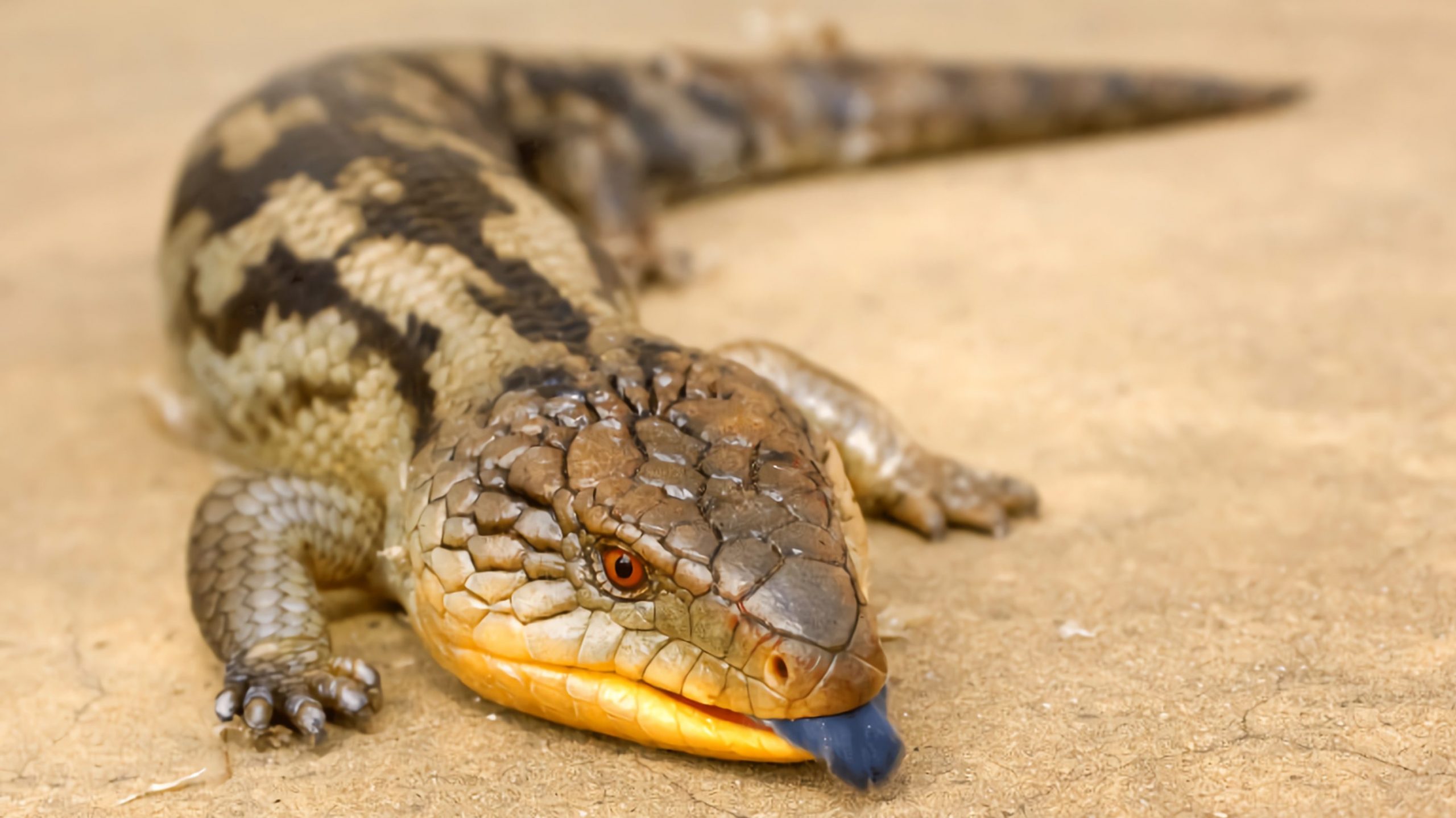
Blue-tongued Skink Care Sheet
| Scientific name | Tiliqua scincoides (Northern blue-tongued skink) Tiliqua occipitalis (Western blue-tongued skink) Tiliqua gigas gigas (Indonesian blue-tongued skink) |
| Common name(s) | Blue-tongued skink Blue-tongues Blueys (Australia) |
| Diet | Omnivore |
| Body length | 1-2 feet |
| Body weight | 5.5 – 15.5 lbs |
| Sexual maturity | 2 – 3 years |
| Lifespan | 15-20 years |
Types of blue-tongued skinks
There are several species of blue-tongued skinks. The most common in the pet trade is the Northern blue-tongued skink (Tiliqua scincoides), which is also the largest and easiest to care for.
Other species found in captivity are the Western blue-tongued skink (Tiliqua occipitalis) and the Indonesian blue-tongued skink (Tiliqua gigas gigas), which have somewhat similar care requirements.
Lifespan
In the wild, the lifespan of blue tongue skinks is around 15 years, but in captivity the life expectancy can go up to 20 years and beyond.
Size
Blue tongued skink can grow up to 2 feet in size. Average length for an adult skink is 18-24 inches. Females usually grow slightly longer than males.
Natural Habitat
In the wild, you can find Blue-tongued skinks in Australia, New Guinea, and parts of Indonesia, especially in desert-like environments, although some subspecies may be found in greener areas such as forests and grasslands.
Behavior
Blue-tongued skinks are somewhat shy and naturally docile compared to other lizards and reptiles. They generally do not mind being handled which is why they are considered easy lizard pets for beginners.
They are ground dwellers, spend much of their time burrowing or hiding in order to avoid predators. They are not particularly social and prefer to spend time alone, but respond well to being handled and can become friendly.
Enclosure requirements
Size
Because blue-tongues can get quite big in size they will require a lot of room to wander around in order to be happy, it is best to set up an enclosure that has a minimum size of 3 feet or more.
Temperature and heating
Because lizards need to thermoregulate their body temperature using external heat, you will need to set up both a basking area where temperatures are higher and a cooler area for your lizard to chill down. You can achieve this by setting up both heat lamps and heat mats strategically within your enclosure.
The basking temperature for blue tongue skink should range around 95-105°F, whereas the cooler side of the enclosure should stay in the 75-80°F. Because Australian species (Northern blue-tongued skink and Western blue-tongued skink) live in desert climates, they can tolerate drops in temperature at night, but keep in mind that the Indonesian species are slightly more sensitive to temperature and may need lower heat for basking and higher heat for cooling down.
| Basking temp | Cool down temp | Night temp | |
| Australian blue-tongues | 100-115°F(37-46°C) | 70-85°F(21-29°C) | 65-75°F(18-24°C) |
| Indonesian blue-tongues | 95-105°F(35-40°C) | 75-85°F(24-29°C) | 70-75°F(21-24°C) |
Lighting
Heat lamps will provide your skinks with both a source of heat and precious UVB rays which are essential for calcium absorption and to prevent diseases.
Ideally, you should keep lights on 12 hours a day to simulate the day / night cycle. You generally do not need to worry about temperatures dropping at night, especially in the case of Australian blue-tongues, you can shut the lights off entirely.
Blue-tongued skinks require around 40-70 watt of UV light. For Australian blue-tongues it’s best to provide multiple strong “desert” lamps (UVB 100+). Do not get nocturnal lamps as these do not provide UVB, and skinks are diurnal creatures.
Humidity
Providing adequate humidity levels can prevent common diseases and aid your blue tongue skink in shedding.
Once again, Australian species who are used to desert-like environments are a bit hardier and can tolerate lower levels of humidity of around 40-60%.
Indonesian species, on the other hand, will thrive at around 60-80% humidity. You can check the humidity in your enclosure using a digital hydrometer with a humidity tracker.
Ideally, make sure to mist the enclosure substrate every day and to “water it” until it’s dampened every now and then.
Diet
Blue tongue skinks are true omnivores who need a varied diet consisting of both animal protein (insects and small rodents), fruits and veggies. Compared to other lizards of similar size, they eat relatively little and prefer greens to meat.
An adult blue-tongued skink diet should in fact consist of 50% vegetables, 40% protein, and 10% fruit. Baby skinks however will need more protein in order to grow, and you should feed them multiple times a day as long as they accept food.
Feeding schedule
| Age | Protein | Vegetables | Fruit | Feed |
|---|---|---|---|---|
| Baby (<1 year) | 70% | 20% | 10% | Every day |
| Adult (1+ years) | 40% | 50% | 10% | Every two-three days |
What to feed
Much of your blue tongue skink’s diet should consist of vegetables such as squash, green beans, prickly pear cacti, kale and collard greens.
Carrots, zucchini, bell peppers, corn and pumpkins can also be added occasionally.
While blue tongue skinks also love fruits, these should be fed sporadically as they are usually high in sugar and may lead to obesity.
Berries are especially suited for their diet – skinks love blueberries, blackberries, raspberries and strawberries. But apples, bananas, pears, pineapples, papaya, prickly pear cactus fruits and grapes can also be fed.
As far as proteins are concerned, in nature skinks will actively prey on insects and small rodents, while also scavenging to get access to other types of meat.
You should feed your pet blue tongue gut-loaded crickets, roaches, mealworms, hornworms and snails, as well as the occasional frozen pinky or mice.
Chicken and quail eggs can be fed, too, even raw and with the shell on.
Cooked beef, chicken or turkey (including heart, liver and gizzards) can be fed as occasional treats. Some owners have successfully fed their lizard dog food, just make sure it’s high quality and low in sodium.
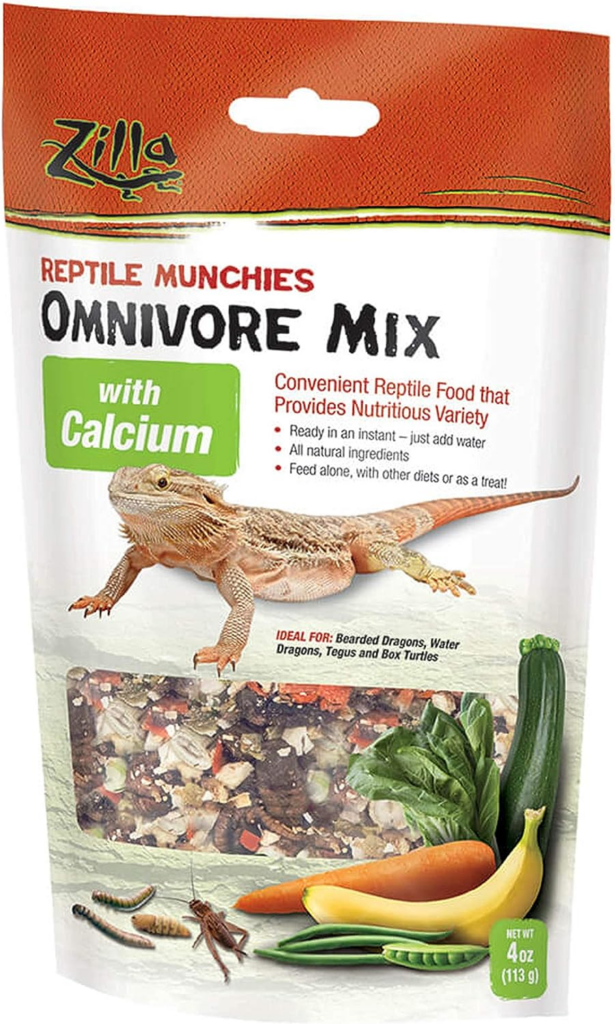 Zilla Omnivore Mix – Insects, Fruits and Veggies + Calcium | 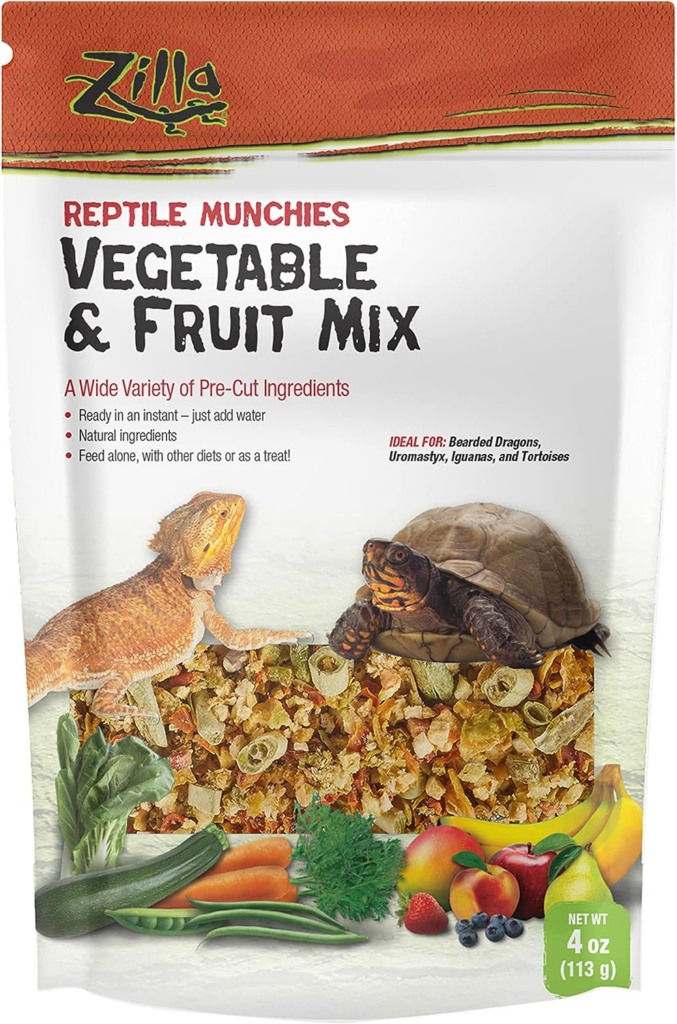 Zilla Vegetable and Fruits Mix | 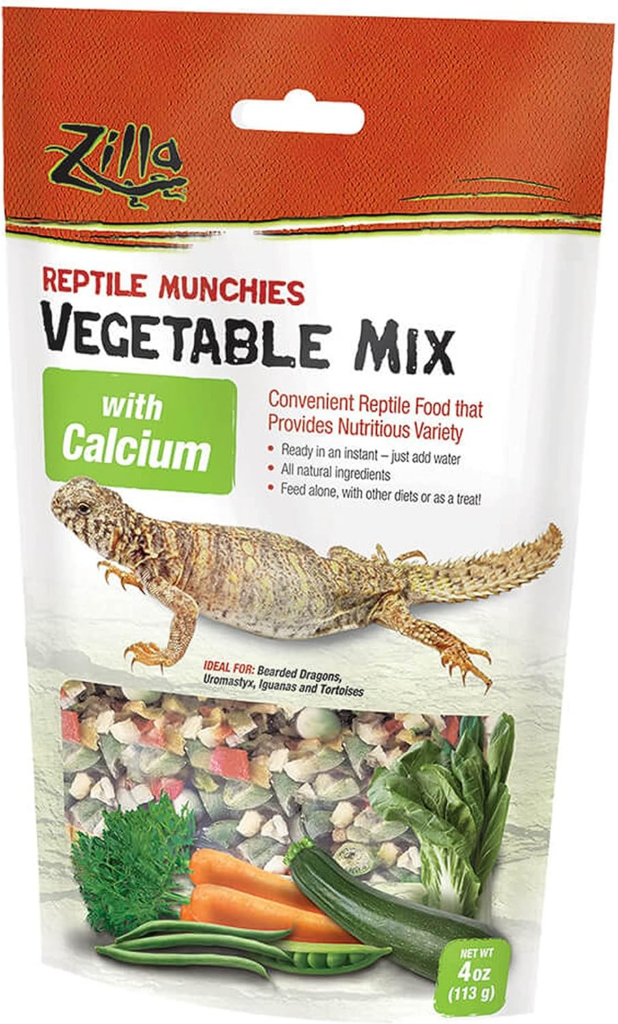 Zilla Vegetable Mix + Calcium |
Another great option are omnivore reptilink blends (50% vegetables – 50% whole prey).
Foods to avoid
- Wild caught insects
- Fireflies
- Ladybugs
- Centipedes
- Spiders
- Ants
- Monarch caterpillars and butterflies
- Fish
- Canned food that is high in sodium or sugar
- Avocados
- Azalea flowers
- Azalea leaves
- Broccoli
- Buttercup flowers
- Citrus fruits (lemon, orange, etc.)
- Eggplant
- Hemp
- Lettuce
- Marijuana leaves or flowers
- Onion
- Potato
- Rosemary
- Sage
- Spinach
- Tomato
Reptilink Options for Blue-tongue Skinks
The 25/25/50 Omnivore blend + Insects reptilinks are specially formulated for adult and subadult blue-tongued skinks they contain 50% vegetable matter (no fruit), 25% insects, and 25% lean rabbit.
Ingredients: Insects (hisser roaches, crickets, superworms), Rabbit (Ohio raised New Zealand white or California white breed, includes entire carcass) organic green beans, collard greens, dandelion greens, endive, 100% natural collagen casing.
You can get $5 off your next Reptilinks order by using code ‘petswithscales’ at checkout or by ordering through our promotional link.

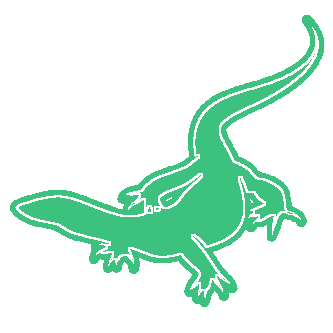
PetsWithScales.com is an informational website about big lizard pet care. We collect and provide information from different sources across the web on how to keep and care for reptiles as pets. The species we mainly deal with are tegus, monitor lizards, skinks and geckos. Our aim is to provide high quality information to help pet owners make better, more informed decisions about their animal’s diets, health and life.